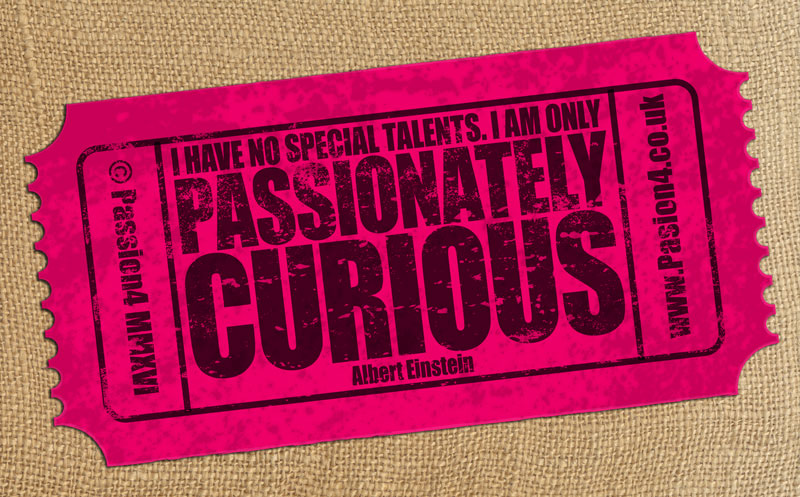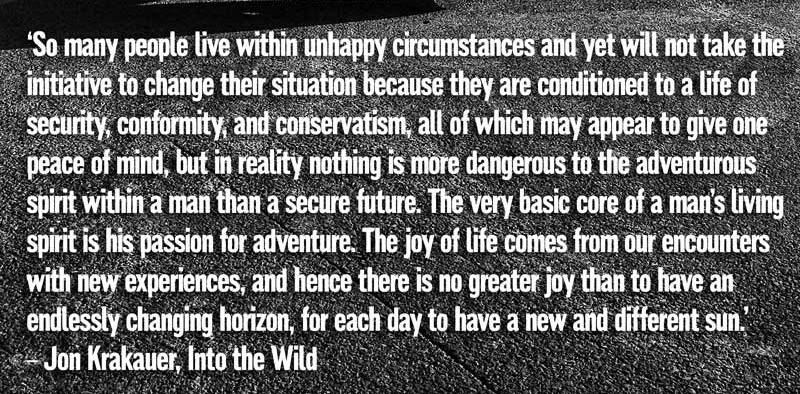Art can often be seen as society’s essential irritant. It can challenge our ingrained perceptions, create emotional responses or stimulate different senses and initiate debate that often transcends our rational understanding.
All of this can be really good for us, if we embrace the challenges it can present.
One of the greatest attributes of the human mind, is being able to connect invisible dots, or to take creative leaps in the dark to explore or even create new ground. As Henry Ford famously once said ‘If you always do what you’ve always done, you’ll always get what you’ve always got.’ To me this is a great definition of binary thinking, humans acting like computers. Computers are tools, humans are individuals. The human thought process needs to be unshackled from a status of ‘what is’ to one of ‘what could be’.
New possibilities
I remember seeing and experiencing for the first time the ground-breaking conceptual sculpture ‘An Oak Tree’, by Michael Craig-Martin, in London’s Tate Modern gallery. It was unlike anything I had come across before and I was transfixed. It was a pivotal moment for me in trying to develop my creative thinking.
For those that may have not seen the work, it’s a plain glass of water sitting on a glass shelf 253cm above the ground, with some supporting text mounted on the wall below it. The question and answer format of the text describes changing ‘a glass of water into a full-grown oak tree without altering the accidents of the glass of water’, and explains that ‘the actual oak tree is physically present but in the form of the glass of water’.
At first sight you might feel conned! It really is a glass of water on a shelf – it is most definitely not an oak tree! This is the mind in ‘comfort thinking’ mode. However, push past first impressions and read the accompanying text and see if your perception changes. Craig-Martin considered ‘the work of art in such a way as to reveal its single basic and essential element, belief that is the confident faith of the artist in his capacity to speak and the willing faith of the viewer in accepting what he has to say’ – so if you have faith or belief, anything can be possible. A glass of water can be an oak tree!
You may agree or disagree with the artist, but it has opened a new dialogue in your mind to think about new possibilities, and that is something which is both vital and profound.
Seek out the alternatives
My professional creative work is all about generating new ideas, exploring new ways of thinking or approaching an existing problem. For any creative currency to be valid, it has to be challenged. For me it is vital to approach problem-solving from multiple, sometimes contrary, directions, if I am to produce solutions that attempt to rise above stock responses. However, relying solely on an existing reservoir of accumulated ‘comfort zone thinking’ knowledge, the pool of resources I can draw on is fairly shallow and prone to quickly drying up! To avoid this, new experiences, challenges and knowledge need to be embraced on a daily basis.
It is hard to be creatively inspired in isolation. Hence why I love working collaboratively with different people; clients, coders, printers, team members, etc. Generating an initial concept is comparatively easy, but sometimes it is all too easy to get seduced by your own ideas. Having alternative input and critique is really important to help shape and bring about a more focused solution.
Surrounding yourself with like-minded people with common interests does not challenge ‘comfort zone thinking’ or free the mind from a state of creative inertia. So instead of surrounding myself with the familiar and comforting, I try to embrace change or challenge as part of daily routines. This can be as simple as just choosing or taking different routes instead of familiar journeys. Limitation can also be a great way of providing self-initiated challenges. For example, I recently purchased a new Nikon DSLR camera, and deliberately opted for a 50mm fixed prime lens rather than the general-purpose zoom lens I have always previously used. Quite literally, I will have to change my perspective when taking pictures now! The ‘limitations’ help to push me to think more creatively about the type of shots I can and cannot take.
I also try to allow my passionate curiosity to get the better of me as it often opens the mind to different perspectives or viewpoints. Spending time with those involved in activities outside of my particular sphere of operation, or from different cultures or backgrounds, can bring huge insights and act as a real breath of creative fresh air. I recently attended a PechaKucha night at the De La War Pavillion, where speakers’ topics ranged from The Art and Neuroscience of Lucid Dreaming to Cool Knots, with lots of variety in between! These topics, although random to me, really inspired my thinking on my own current work projects.
Ask ‘Why not?’
Imagine the possibilities if painters mixed with scientists, photographers with mathematicians, linguists with engineers, musicians with sociologists, etc., or better still, they all mix together to work collaboratively on a project! The outcome might initially be some kind of chaotic, creative cacophony! It would be very challenging to manage, but points of difference and commonality would soon be discovered and explored. Creative ideas would soon come to the surface as new thoughts or ideas were considered. Each discipline would be able to offer a unique, external objective perspective by simply asking ‘Why not?’. This in itself can bring a huge release, as accepted traditional ways of thinking within a field are challenged and developed further.
I believe this would resonate with some of the principles of Walter Gropius’s Bauhaus School of Art in Germany (1919–1933), a form of education that that has proved to be hugely influential ever since.
Often comfort zone thinking is a self-imposed type of mental restriction that we create within our mind. It gives us safe boundaries, a sense of comfort, but beware, these boundaries eventually become a creative prison and ultimately, the death of an inspired mind!
In the words of writer and mountaineer Jon Krakauer,
 This blog is contributed by Chris Hamilton Brown, an independent designer and founder of www.passion4.co.uk, producing integrated solutions for print, online, social, photographic and furniture with passion, eclecticism and vision.
This blog is contributed by Chris Hamilton Brown, an independent designer and founder of www.passion4.co.uk, producing integrated solutions for print, online, social, photographic and furniture with passion, eclecticism and vision.


